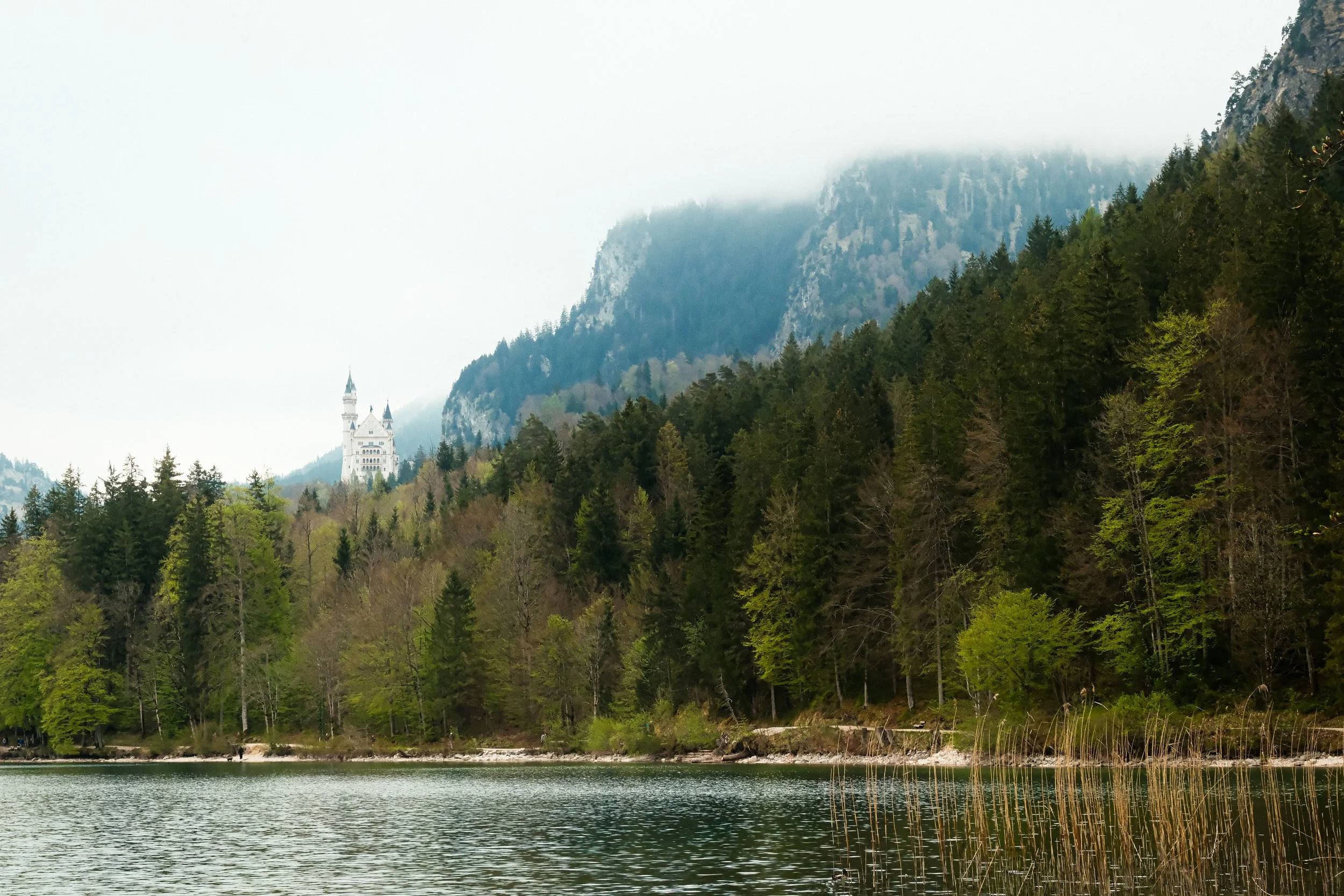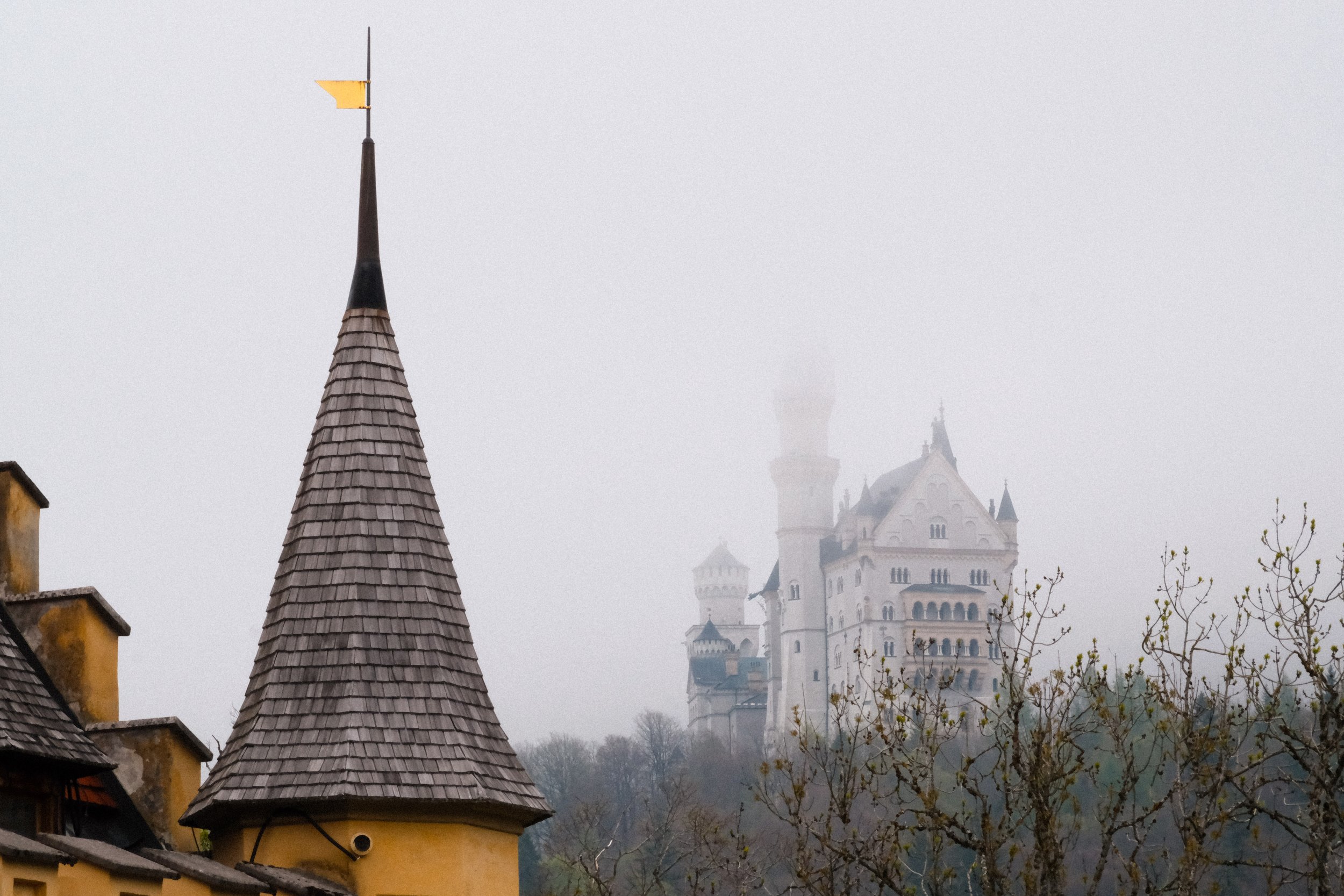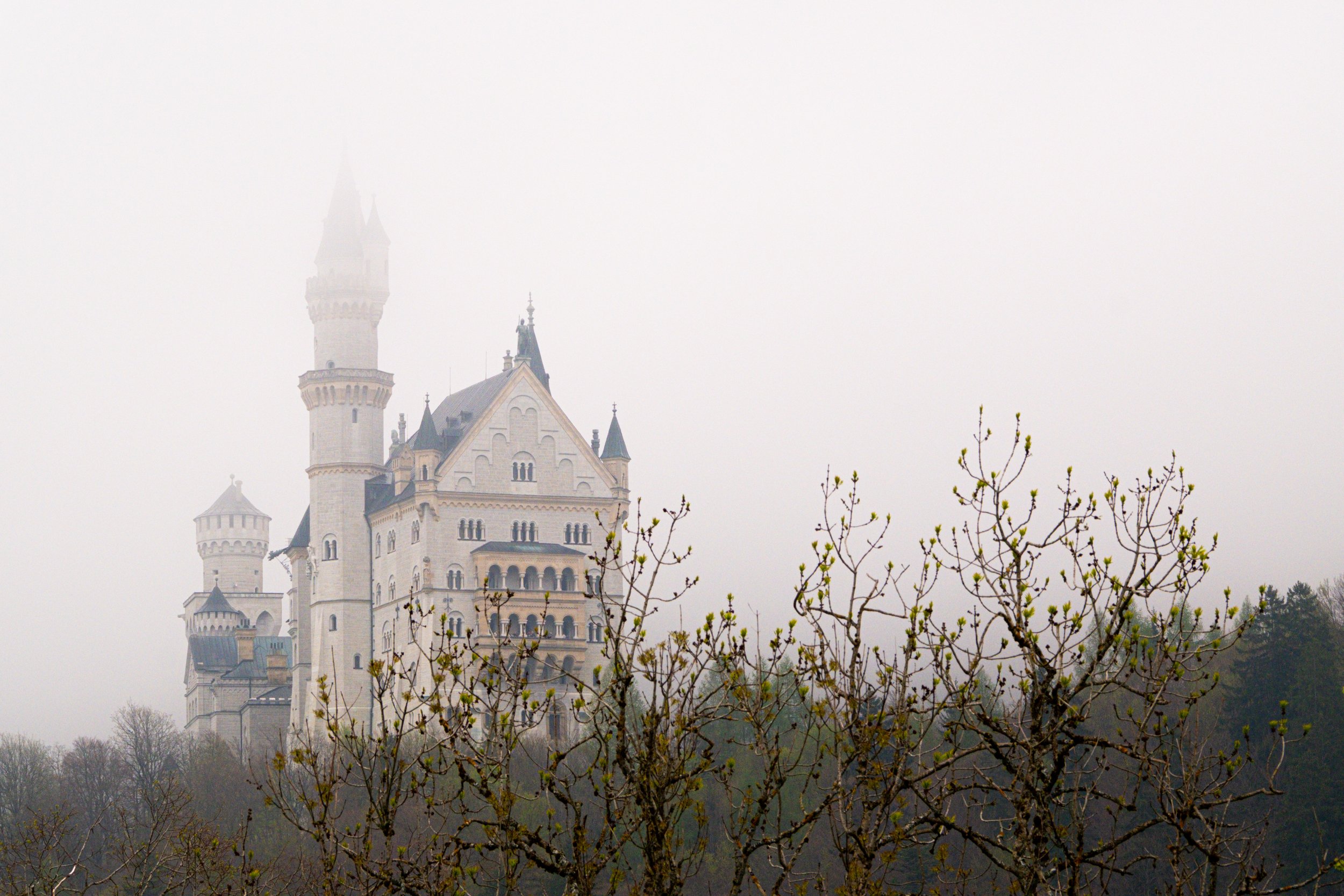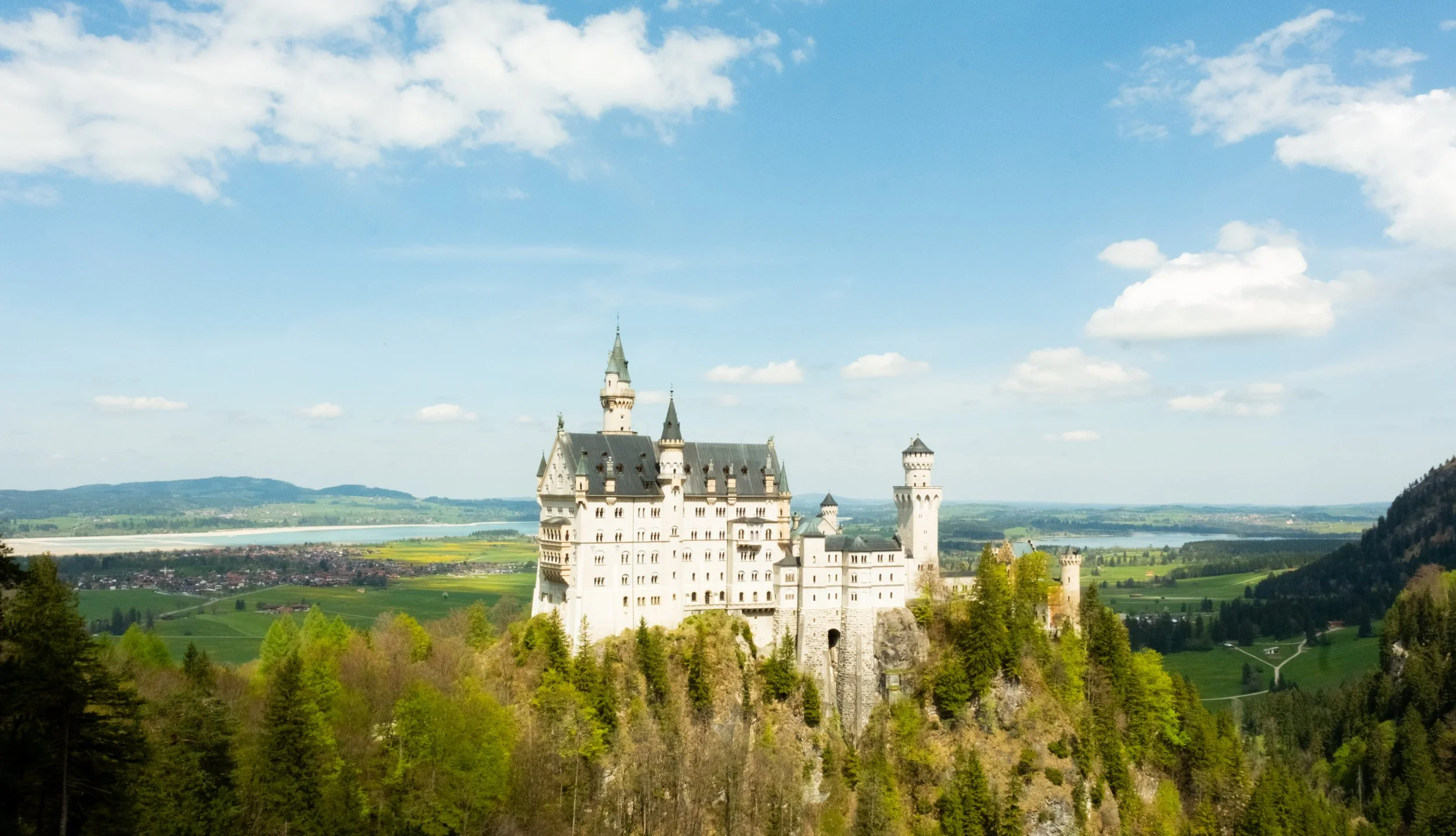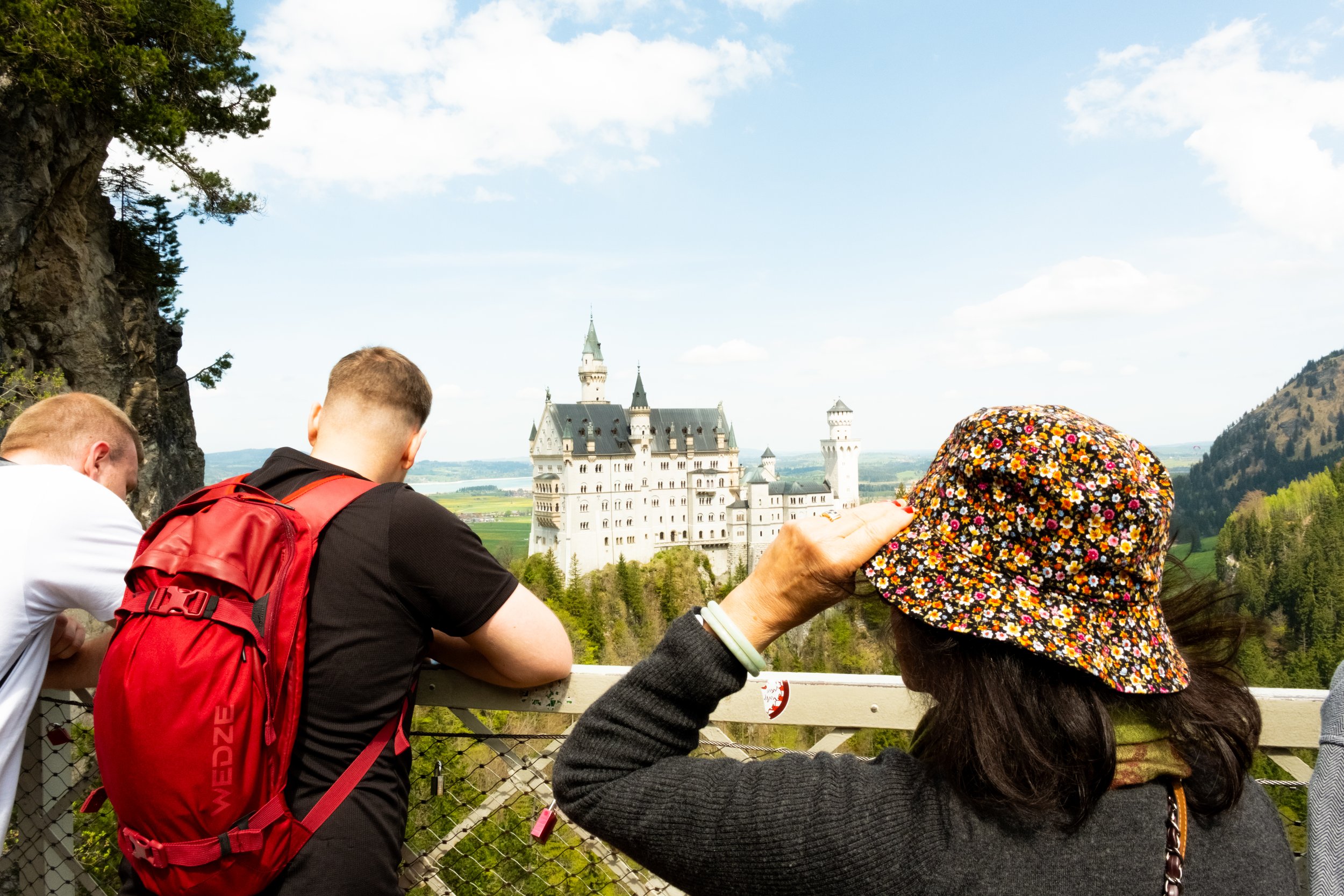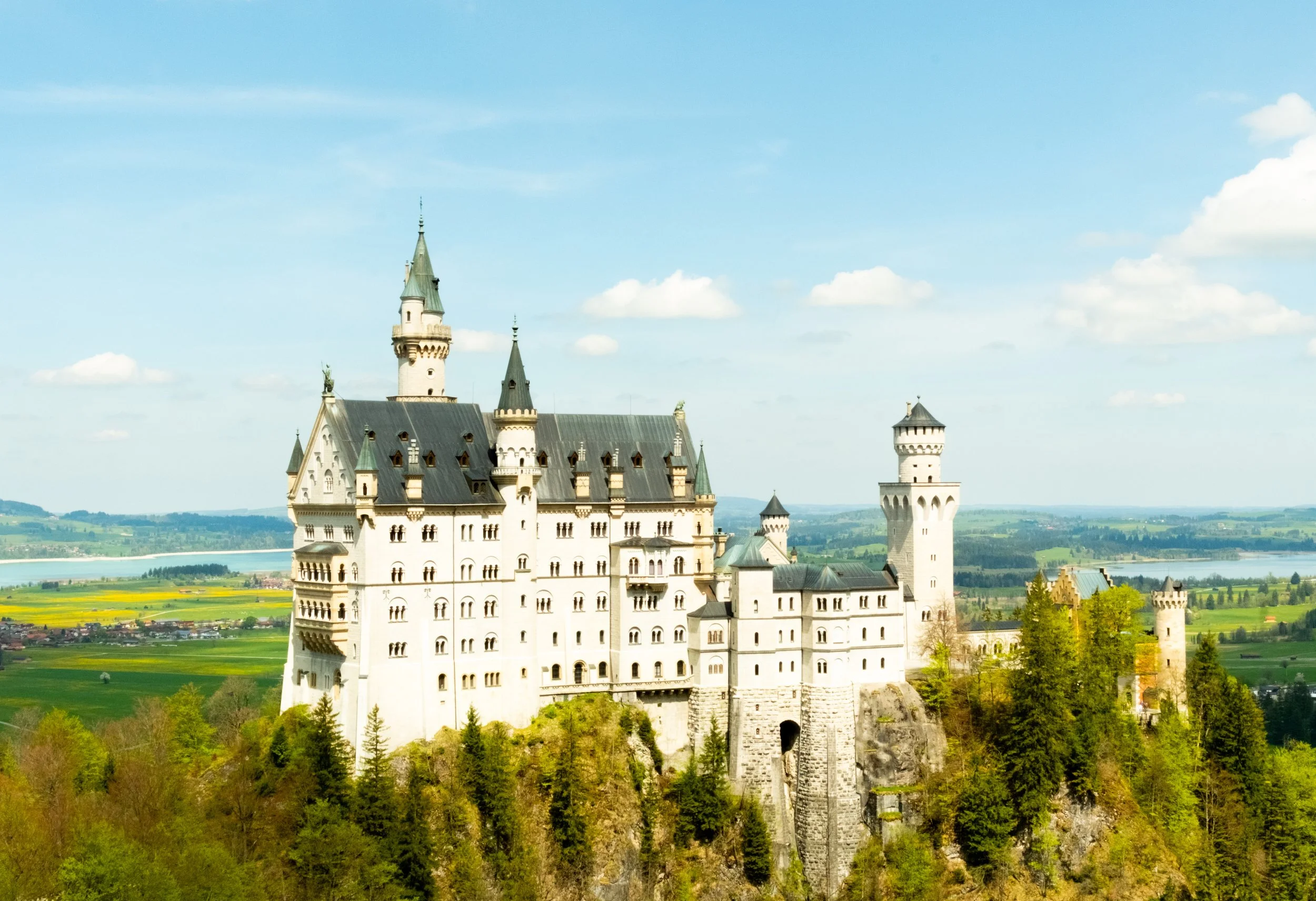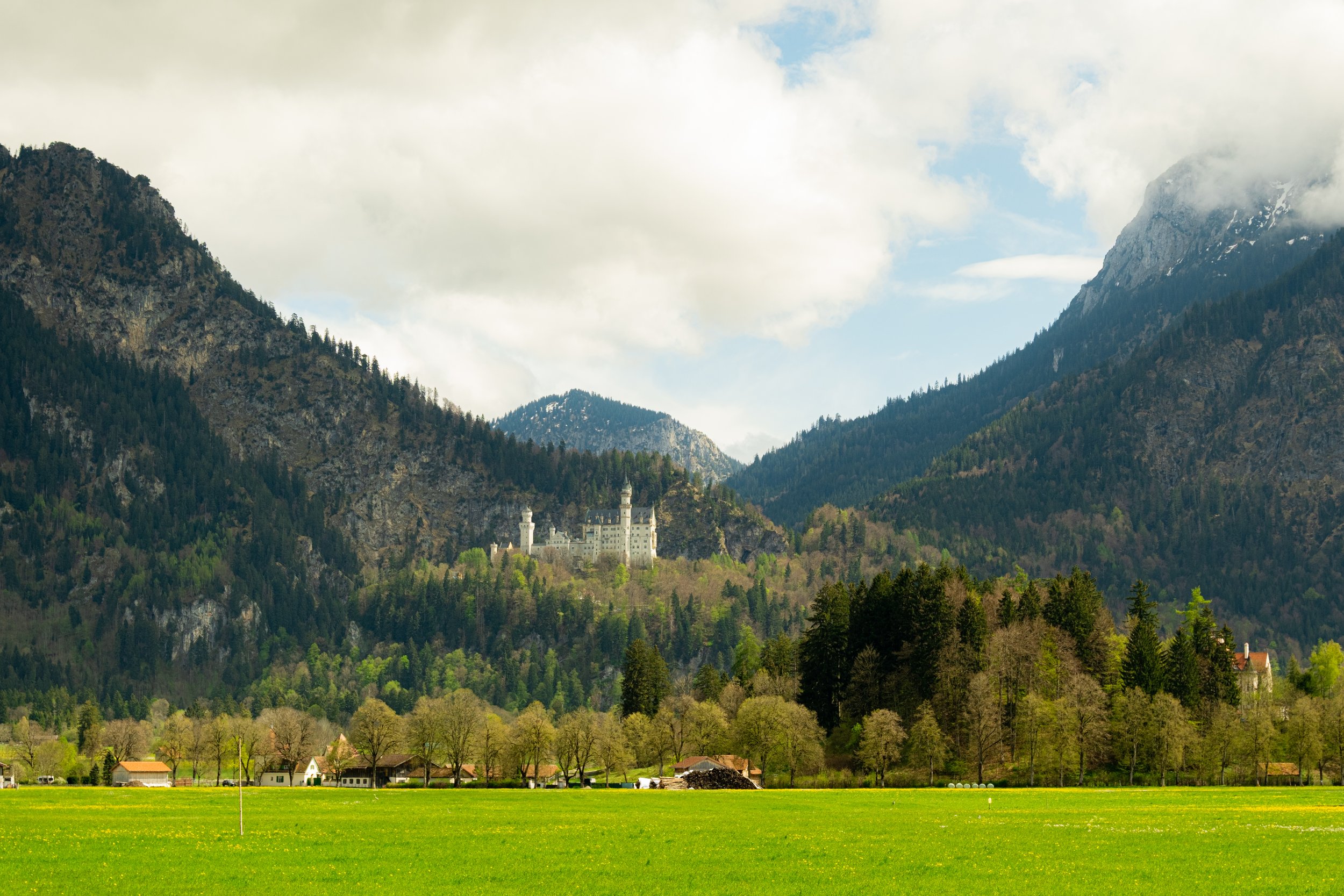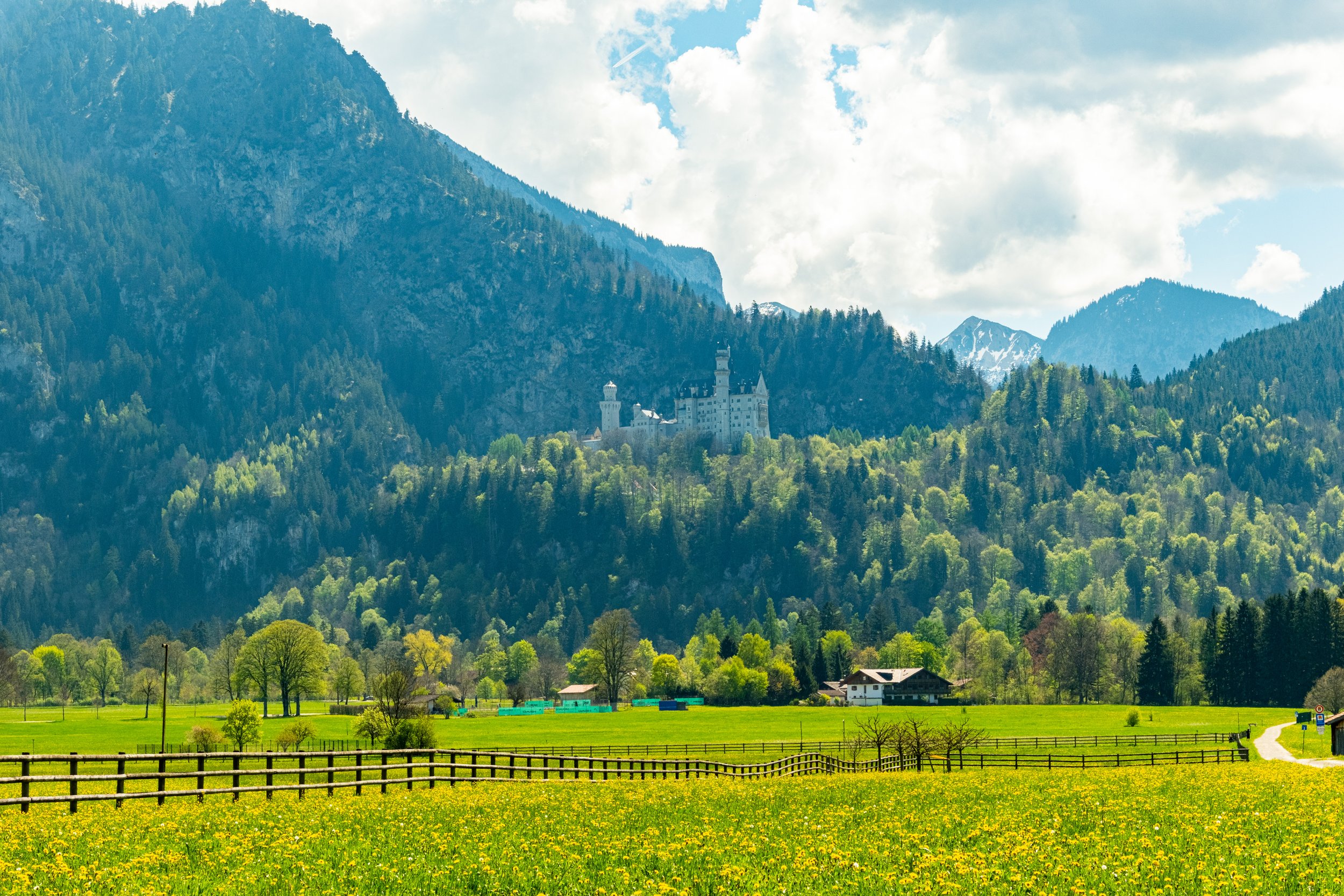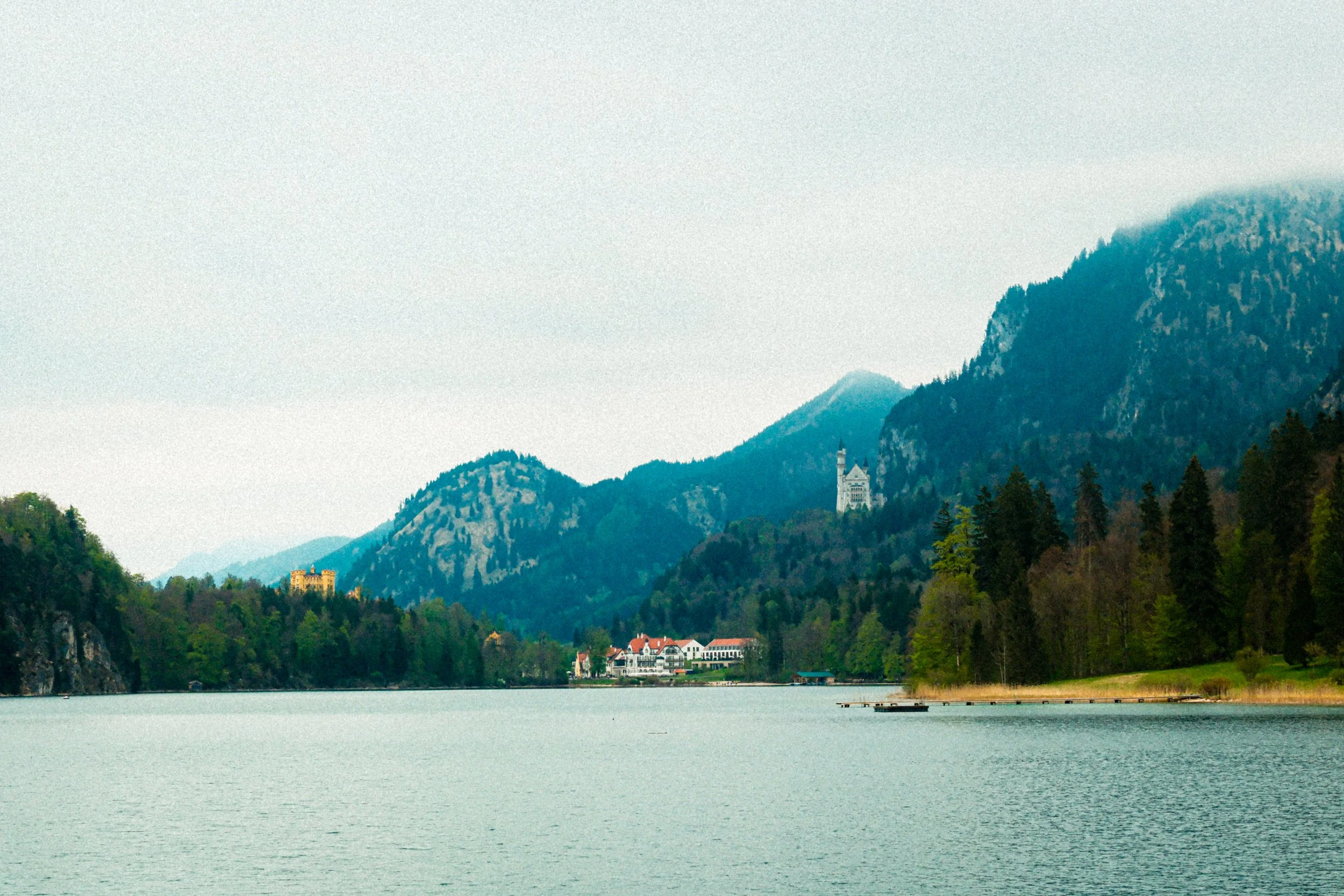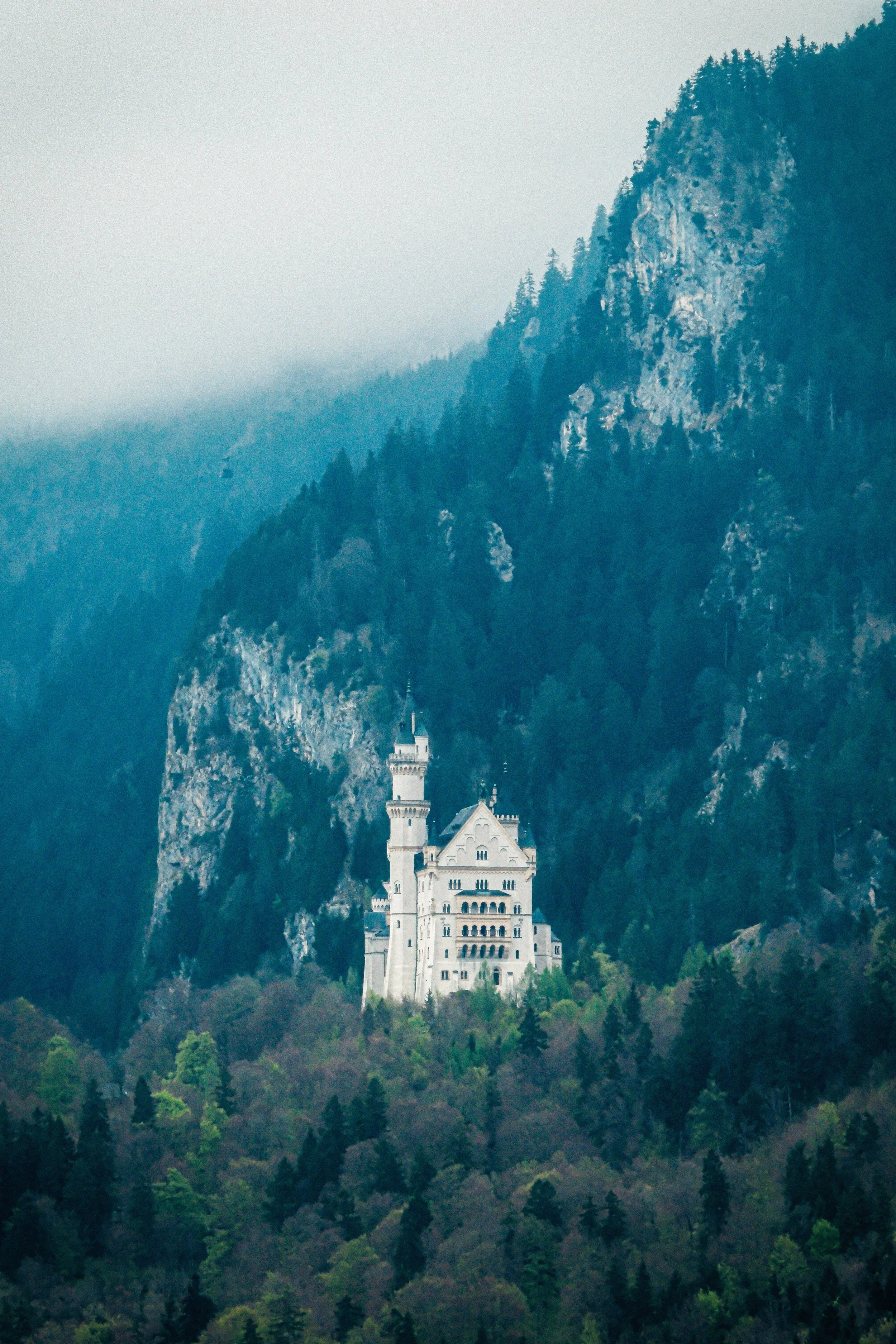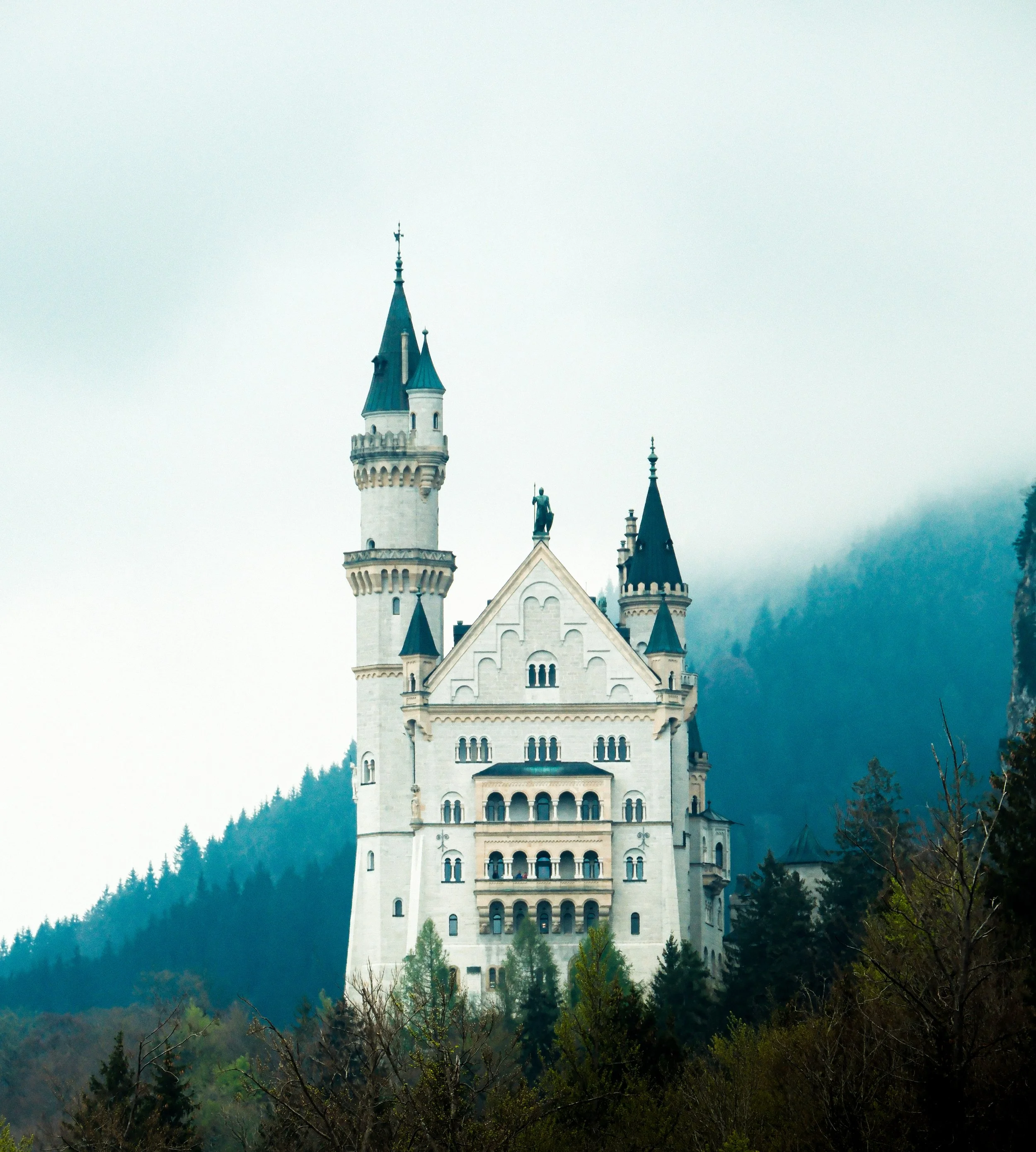A Fairytale Castle, a Not-So-Fairytale Lens, and Way Too Much Walking
There are castles, and then there's Neuschwanstein—the stuff of fairytales, film sets, and fever dreams. Tucked high in the Bavarian Alps above the village of Schwangau, this 19th-century Romanesque Revival masterpiece has long lured dreamers and photographers alike.
Armed with a (rented) Fujinon XF 70–300mm f/4–5.6 R LM OIS WR, I set out to photograph Neuschwanstein from every angle I could physically reach. That quest took me across nearly 50 kilometers of trails, ridges, and forest paths—because sometimes, the perfect shot is a little (or a lot) out of the way.
Perched on a rugged hill above Alpsee and backed by the Tegelberg massif (part of the Ammergebirge range), Neuschwanstein is as photogenic as it is dramatic. Commissioned by the King Ludwig II of Bavaria in 1869, the castle was never completed during his lifetime.
Interestingly, Walt Disney drew inspiration from Neuschwanstein when designing Sleeping Beauty’s Castle. But what the theme park lacks is the raw, untamed beauty of the landscape surrounding the real thing.
From the terraces of Hohenschwangau Castle, you do get a view of Neuschwanstein—sort of. The castle stood in the distance, dramatically shrouded in fog like it was trying to avoid being photographed that day. Very moody. Very ethereal. Very helpful if you’re carrying a telephoto lens and hoping for detail.
Then there’s the Marienbrücke—the classic spot, the postcard angle, the “I-saw-this-on-Google” viewpoint. Yes, there were plenty of people there, phones out, selfie sticks in full swing, but it wasn’t too crowded. You could still claim a spot, dig in, and wait for the clouds to cooperate. Just don’t look down too long.
There’s really no point in staying too long on the bridge, unless you enjoy playing meteorological roulette. Once you’ve secured your spot, all that’s left to do is wait—for the sun to show up, for the clouds to move, or for both to finally agree on giving you decent lighting. Until then, you just stand there with twenty other people pretending not to be annoyed that the castle looks better on the postcards.
The view was undeniably stunning, even if the slight sway of the bridge and its very open design added a touch of "maybe don’t lean too hard on the railing" energy. All part of the experience, I suppose.
Strangely enough, I didn’t actually love the castle from up close. Sure, it’s iconic—but once you’re standing right in front of it, it doesn’t quite live up to the hype. The architecture is fine, but nothing that made me want to hang around.
What really makes Neuschwanstein special, in my opinion, is its silhouette—the dramatic formation of its towers, the steep gables, and the way the whole structure seems to rise organically from the forested hilltop.
It’s the kind of design that was clearly meant to be admired from a distance. Framed by layers of trees and backed by the mountains, it becomes more than just a nice castle—it turns into a scene.
It’s the kind of structure that looks best when it’s being admired from a respectful distance—with some foreground to ground it, and the mountain range doing its job in the background. So instead of sticking around or touring the inside, I kept moving—saving my energy for finding better angles, even if it meant steeper climbs, muddier boots, and occasional regret halfway up the trail.
These two shots (taken on separate days) were captured from a stretch of farmland between Schwangau and Tegelberg. The foreground has patches of grass and yellow wildflowers, leading into a line of trees that naturally frames the castle. In the background, the mountain rises behind Neuschwanstein, giving the scene a layered and balanced composition, with the castle nestled neatly into the landscape.
For me, the most rewarding view came from the west end of Alpsee Lake. It’s a bit (understatement!) of a walk, but absolutely worth it. From there, you get a wide, unobstructed view across the calm water, with Neuschwanstein perched dramatically on the ridge, just distant enough to feel dreamlike, but still sharp in detail. The composition naturally falls into place—lake in the foreground, forest at the base, mountains behind—and if you look to the left, you’ll spot its often-overlooked sibling, Hohenschwangau Castle, sitting quietly like the responsible older child who did everything right but never made it onto the souvenir mugs. It’s one of the few spots where you can frame both castles in the same scene—without fighting a crowd or a drone for space.
The weather stayed overcast that day, but not in a gloomy way—just cloudy enough to mute the landscape and give everything a cooler, quieter tone. The fog still clung to the mountains in the background, softening the outlines and making the castle feel more isolated and storybook-like. I used the 70–300mm lens to zoom in on the façade, trying to work with the mood. The light was flat, the contrast low, but there was a kind of stillness in the scene that made the details stand out—the sharp spires, the pale stone, the way the trees fade upward into mist. It wasn’t the kind of dramatic weather you plan for, but it gave the images a subtle mood I ended up liking more than expected.
Neuschwanstein was just as photogenic as expected—at least from the right distance, in the right light, with enough (again an understatement!) walking involved. Its placement on the hill, the shape of the towers, the way it interacts with the landscape—it’s theatrical, almost unreal. I can only imagine how it would look in winter—covered in snow, the rooftops frosted white, and the castle blending almost completely into the landscape, with only the dark spires standing out against the pale background.
I still have a lot more to share from those 50 kilometers of walking, hiking, and climbing around Schwangau—from forest paths to open fields, steep trails to quiet corners I probably wasn’t supposed to be on. Neuschwanstein was only part of the story. Along the way, I put the Fujinon XF 70–300mm through just about every condition I could find: distant shots, low light, fog, and fatigue (mine, not the lens). I have a few thoughts—some good, some not so glowing—that I’ll get into soon. But for now, I’ll save the gear talk, the high viewpoints, and the moments of mild regret for the next post.
